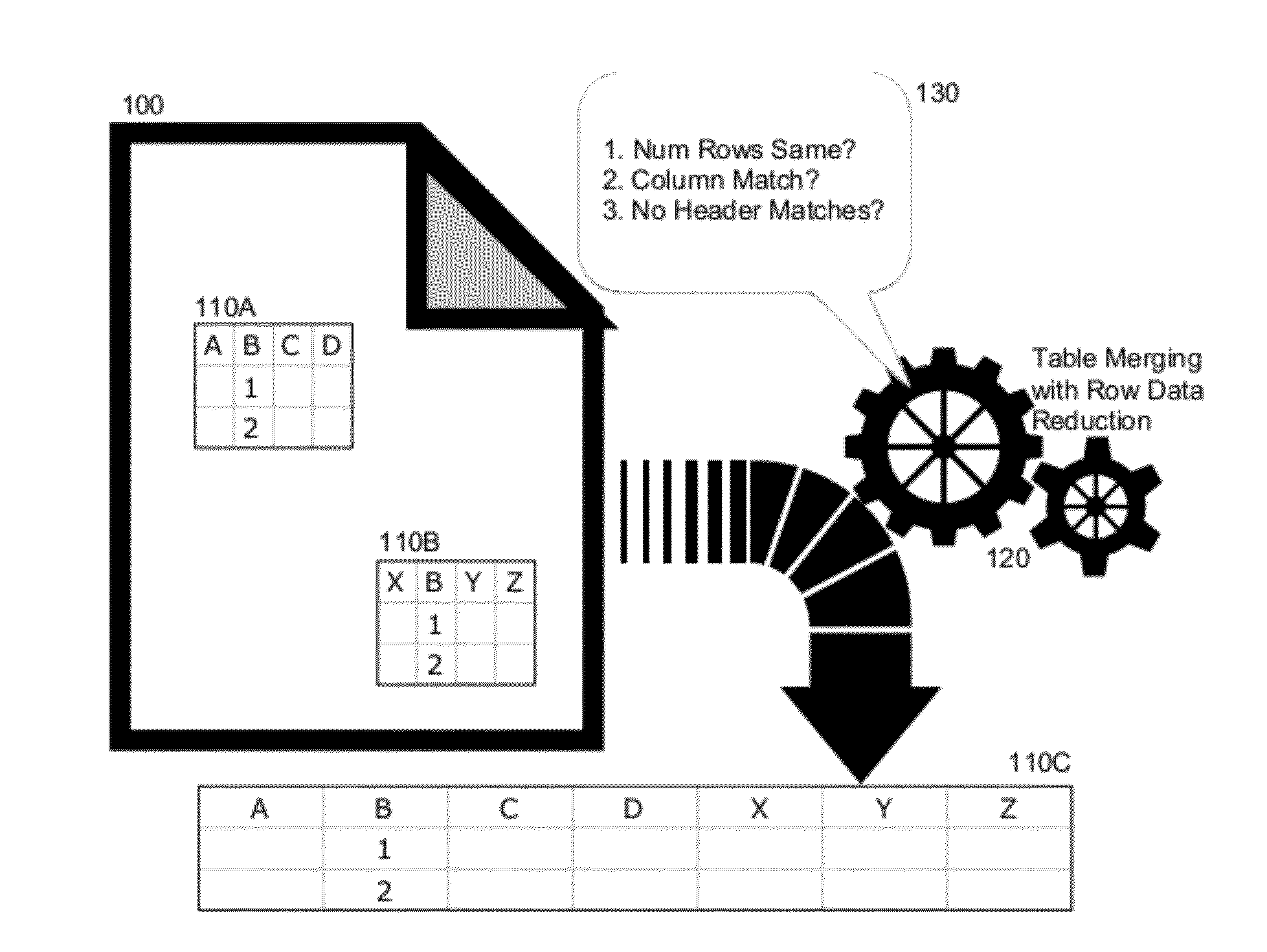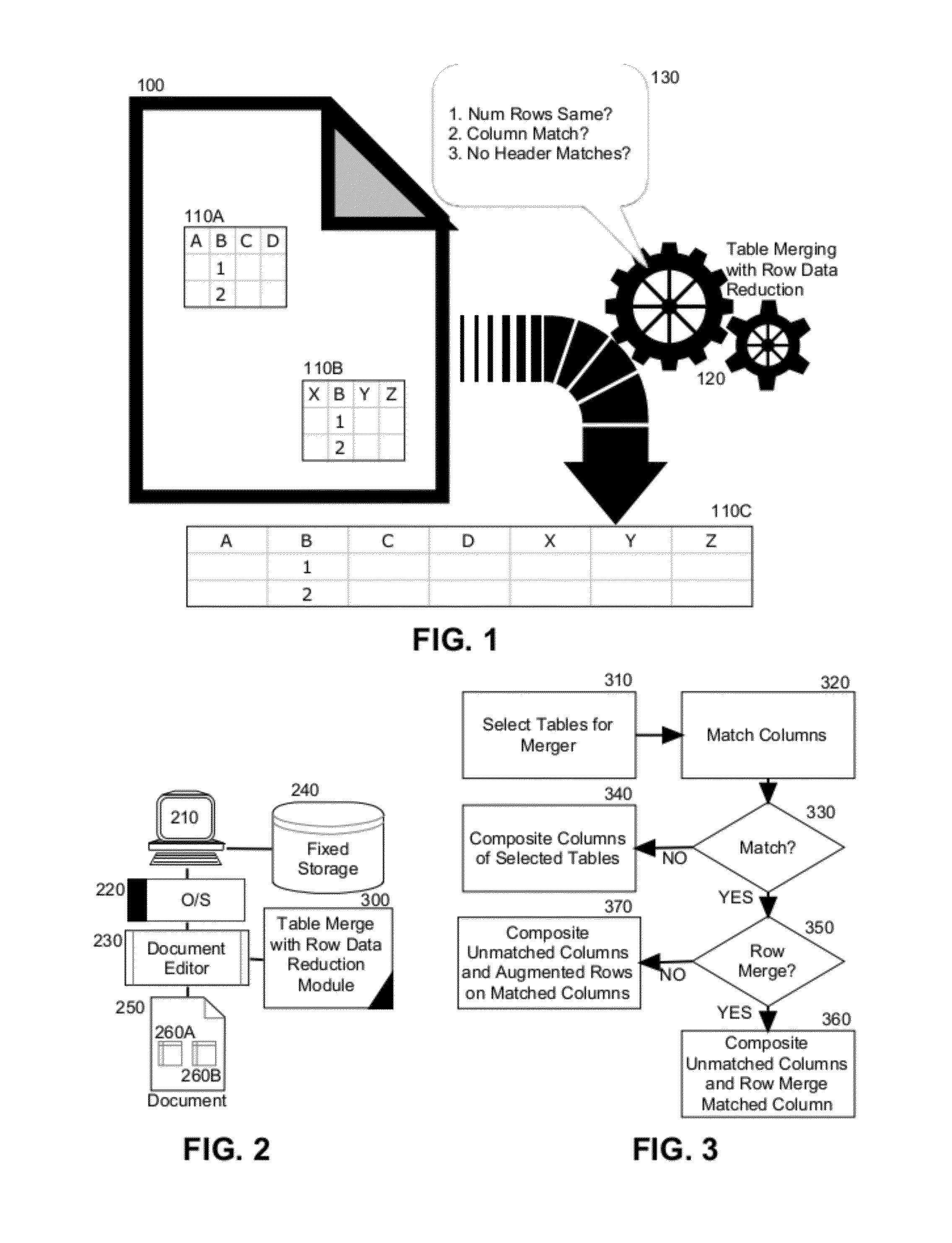Table merging with row data reduction
a technology of table and row data, applied in the field of database table management, can solve the problem that the general algorithm of merging columns fails to account for the reality that some rows in the merged column may contain duplicates
- Summary
- Abstract
- Description
- Claims
- Application Information
AI Technical Summary
Problems solved by technology
Method used
Image
Examples
Embodiment Construction
[0015]Embodiments of the invention provide for table merging with row data reduction for merged columns. In accordance with an embodiment of the invention, two different tables can be selected for merger, each of the tables including at least one column and each column including at least one row of data. A column of a first one of the different tables can be correlated to a column of a second one of the different tables. The correlated columns can be merged together into a merged column by aggregating the data from the cells of each of the correlated columns, however, if the number of rows of the column of the first one of the different tables is equal to the number of rows of the column of the second one of the different tables, and if the data in the rows of the respective columns are identical, then only the rows from one of the correlated columns will be included in the merged column and the rows from the other of the correlated columns will be discarded.
[0016]In further illustr...
PUM
 Login to View More
Login to View More Abstract
Description
Claims
Application Information
 Login to View More
Login to View More - R&D
- Intellectual Property
- Life Sciences
- Materials
- Tech Scout
- Unparalleled Data Quality
- Higher Quality Content
- 60% Fewer Hallucinations
Browse by: Latest US Patents, China's latest patents, Technical Efficacy Thesaurus, Application Domain, Technology Topic, Popular Technical Reports.
© 2025 PatSnap. All rights reserved.Legal|Privacy policy|Modern Slavery Act Transparency Statement|Sitemap|About US| Contact US: help@patsnap.com


